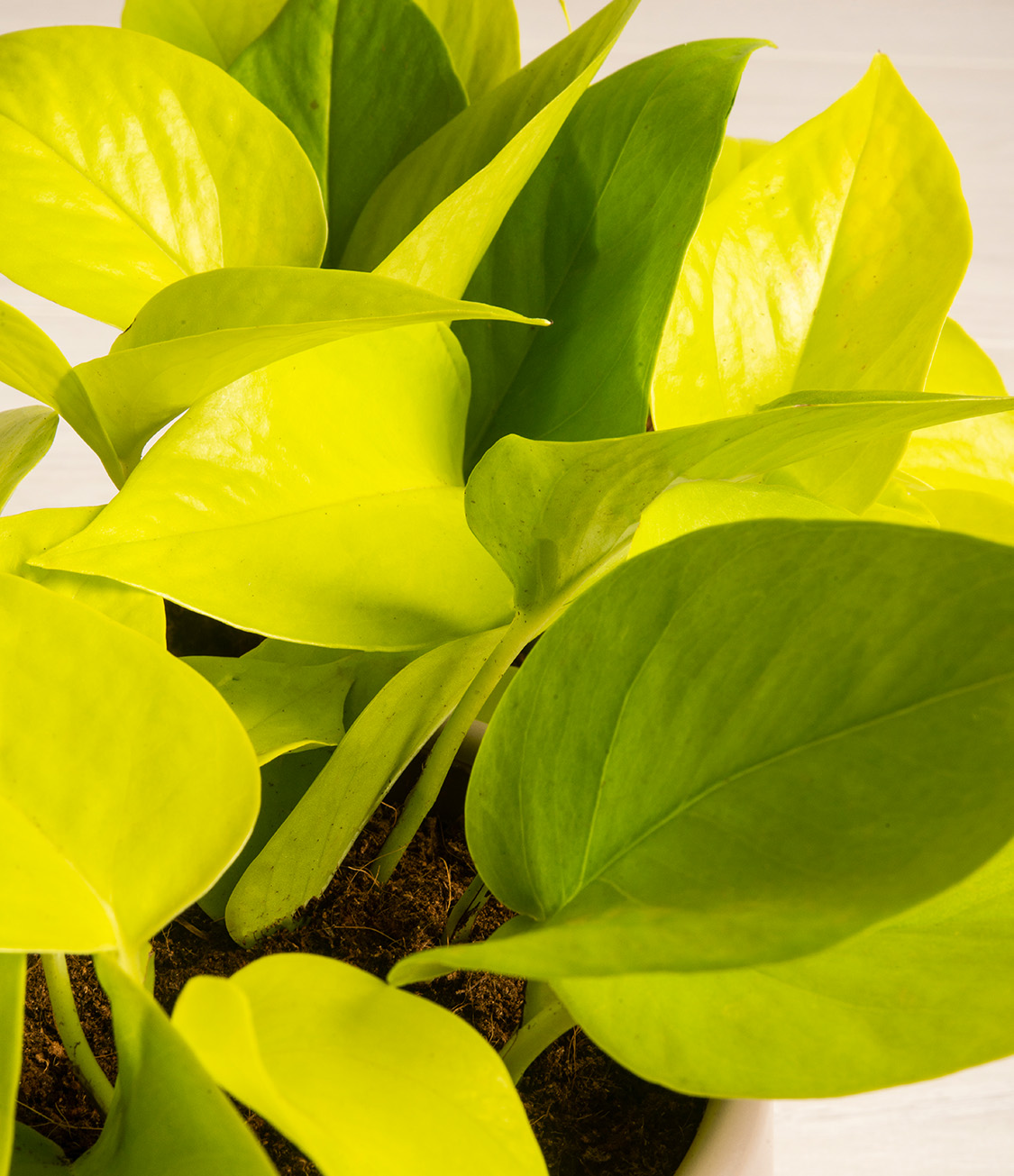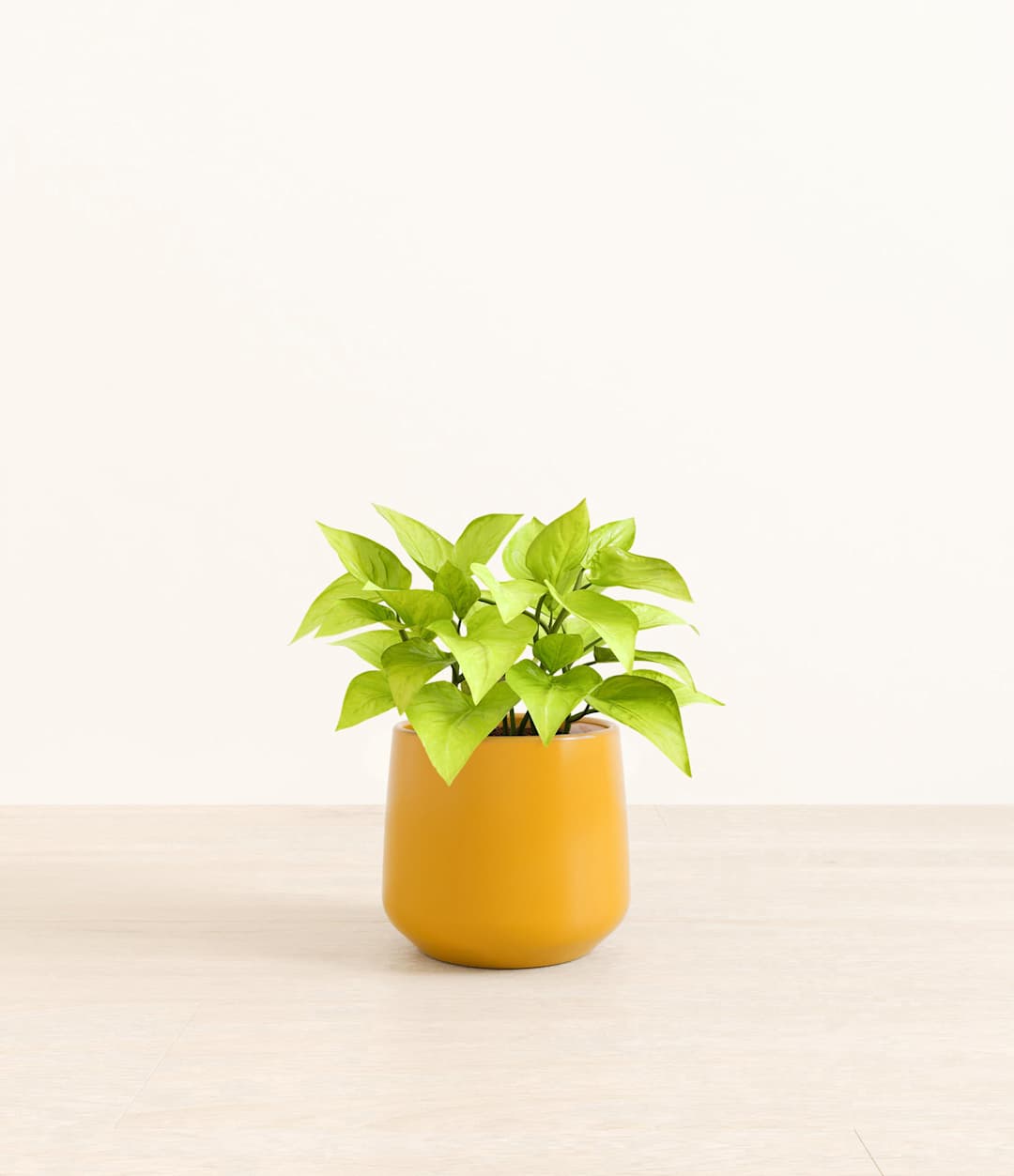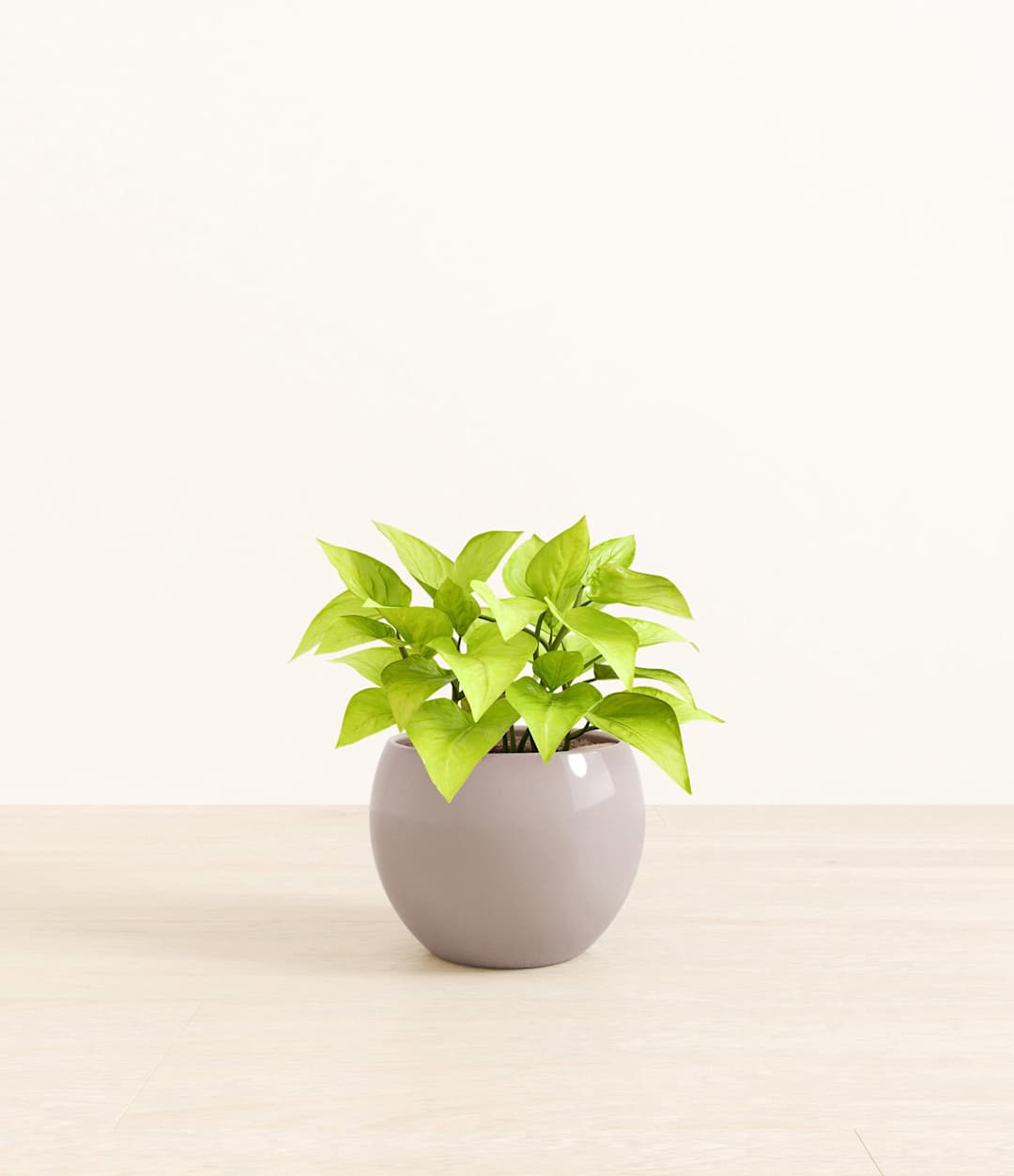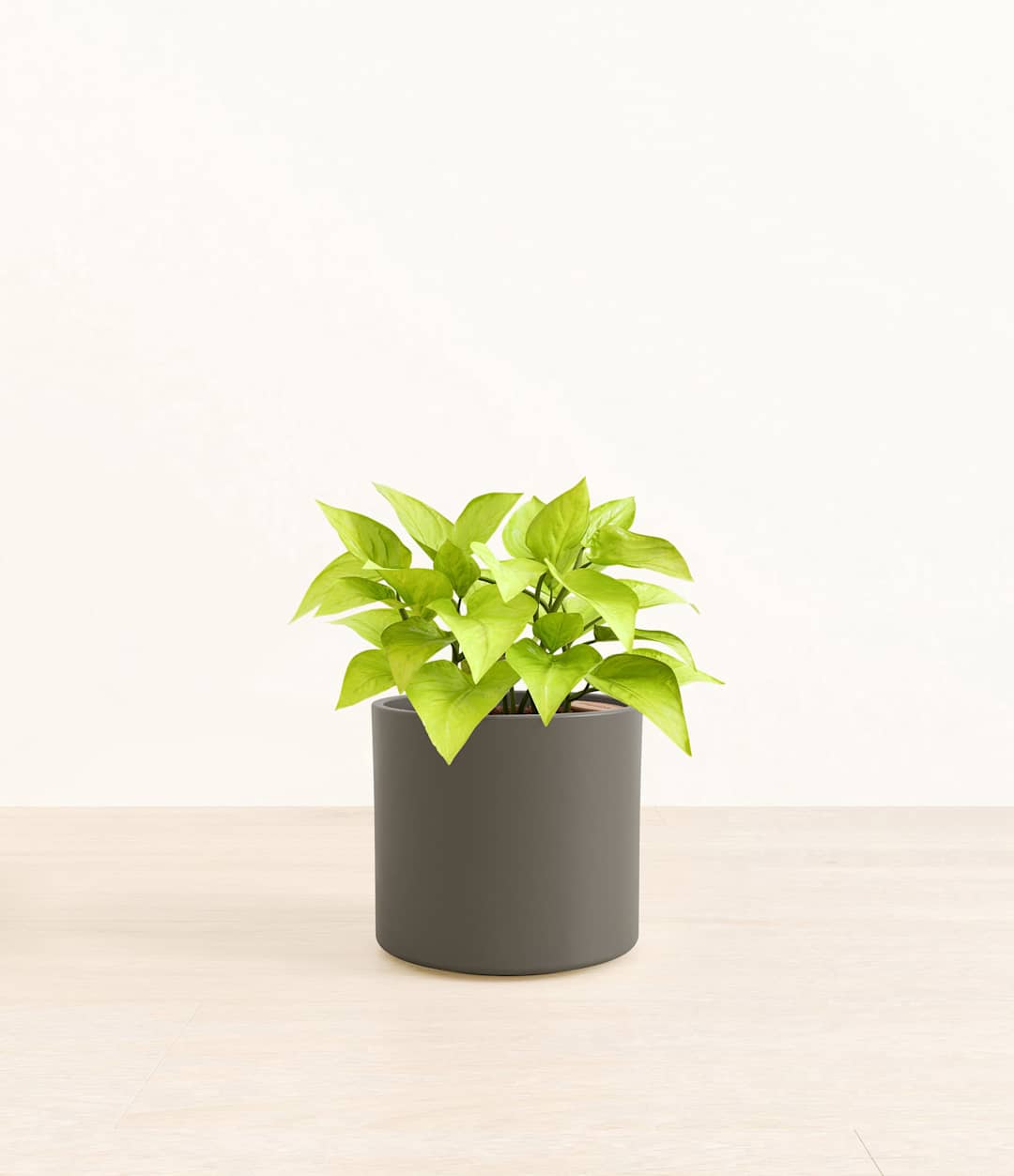How to Care for Neon Pothos
Shop this plantAbout Neon Pothos
Our love for this natural trailer is as ancient as love itself, earning it the name Pothos - the god of love, who was named after the Greek word for ‘yearning’ and symbolized carrying a vine stretching as far and wide as the heart’s desires. Hailing from the Pacific Islands, Neon Pothos is known for its admirable resilience and graceful vines, and wears a bright electric lime foliage that ever so elegantly steals the show.
Other common names
- Neon Devil's Ivy
- Electric Pothos
- Epipremnum aureum 'Neon'
- Ivy arum
- Hunter’s Robe
- Solomon Islands Ivy
- Taro Vine
How Often Should I Water My Neon Pothos?
With easyplant, watering your pothos neon is easy. Just check the easyplant reservoir once a month and refill if empty, and you’re all set!
Neon Pothos Light Needs
Neon Pothos grows best in a well lit space with bright direct or indirect sunlight, and can adapt to spaces with medium to low light, where the source of light is further away. Avoid placing it in spaces without natural sunlight.
Neon Pothos is highly adaptable when it comes to lighting. While it thrives best in bright, indirect light, it can also tolerate spaces with medium to low light. If you notice the vibrant color of its leaves is fading, the plant may benefit from a brighter spot. Neon Pothos can tolerate direct sunlight, but if you opt for a sunnier spot, make the transition gradually and be mindful of any scorching on the leaves. To enrich your knowledge on plant lighting, peruse our detailed guide.
Neon Pothos Plant Care
During your Neon Pothos’ first few days at home, one or two leaves might fall, or turn yellow. This is a normal part of adjustment and no cause for concern. Once adjusted, Neon Pothos is very easy to care for, and will reward your love for it by quickly bouncing back from any mishap. To help it grow optimally and evenly, occasionally dust the leaves and rotate the pot by a ¼ turn once a month.
Temperature & Humidity
Originating from tropical climates, Neon Pothos is comfortable in temperatures between 65°F and 75°F, although it can tolerate up to 85°F. Sudden drops below 50°F could adversely affect the plant's health, so keeping it away from drafts, A/C units, heating vents and fans is advisable. In terms of humidity, Neon Pothos is quite adaptable and can acclimate to typical indoor humidity levels. However, if you find that the air is particularly dry, consider using a humidifier or placing a tray of water near the plant to increase local humidity. Grouping it with other humidity-loving plants can also create a beneficial microenvironment.
Is Neon Pothos Toxic for Pets & Kids?
Yes, Neon Pothos contains substances that can be moderately toxic when ingested, causing mouth and gastrointestinal irritation, so be sure to keep away from curious children and pets.
Troubleshooting Common Problems with Neon Pothos
Part of plant care is observing how your Neon Pothos is faring in its environment so you can make adjustments as needed. Like all houseplants, the Neon Pothos has distinct signs that indicate it's not doing well. If you notice multiple leaves turning pale or yellow, it may be receiving too much light; consider relocating the plant to a less brightly lit area. Pale or yellow leaves can also indicate overwatering; in this case, reduce the watering frequency, check the soil moisture, and ensure that the plant isn't sitting in water. If the leaves start to droop, the cause could be either overwatering or underwatering—check the soil's moisture to figure out which one it is, and adjust your care routine accordingly. Neon Pothos plants can be susceptible to various pests, including spider mites and mealybugs. Indications of a pest problem could be brown, yellow, or black spots grouped together, leaf deformation, or webbing on the leaves' underside. To address this, remove the pests manually or use a cloth soaked in alcohol, then treat your plant with insecticidal soap or neem oil.
Frequently Asked Questions about Neon Pothos Plant
- What type of light does Neon Pothos need?
While bright, indirect light is ideal for Neon Pothos, the plant is also adaptable to medium to low light conditions. However, to keep its vibrant color, avoid placing it in too much harsh, direct sunlight.
- How can I differentiate Neon Pothos from Heartleaf Philodendrons?
Although they have similarly shaped leaves, Pothos plants typically have larger leaves and grooved stems, unlike the Heartleaf Philodendrons.
- How often should I water my Neon Pothos?
With easyplant, it's a breeze. Check the easyplant reservoir every month and fill it when empty. Without an easyplant, water when the top 1-2 inches of soil feel dry to the touch.
- Is Neon Pothos toxic?
Yes, Neon Pothos can be moderately toxic if ingested, so it's best to keep it out of reach of pets and children.



